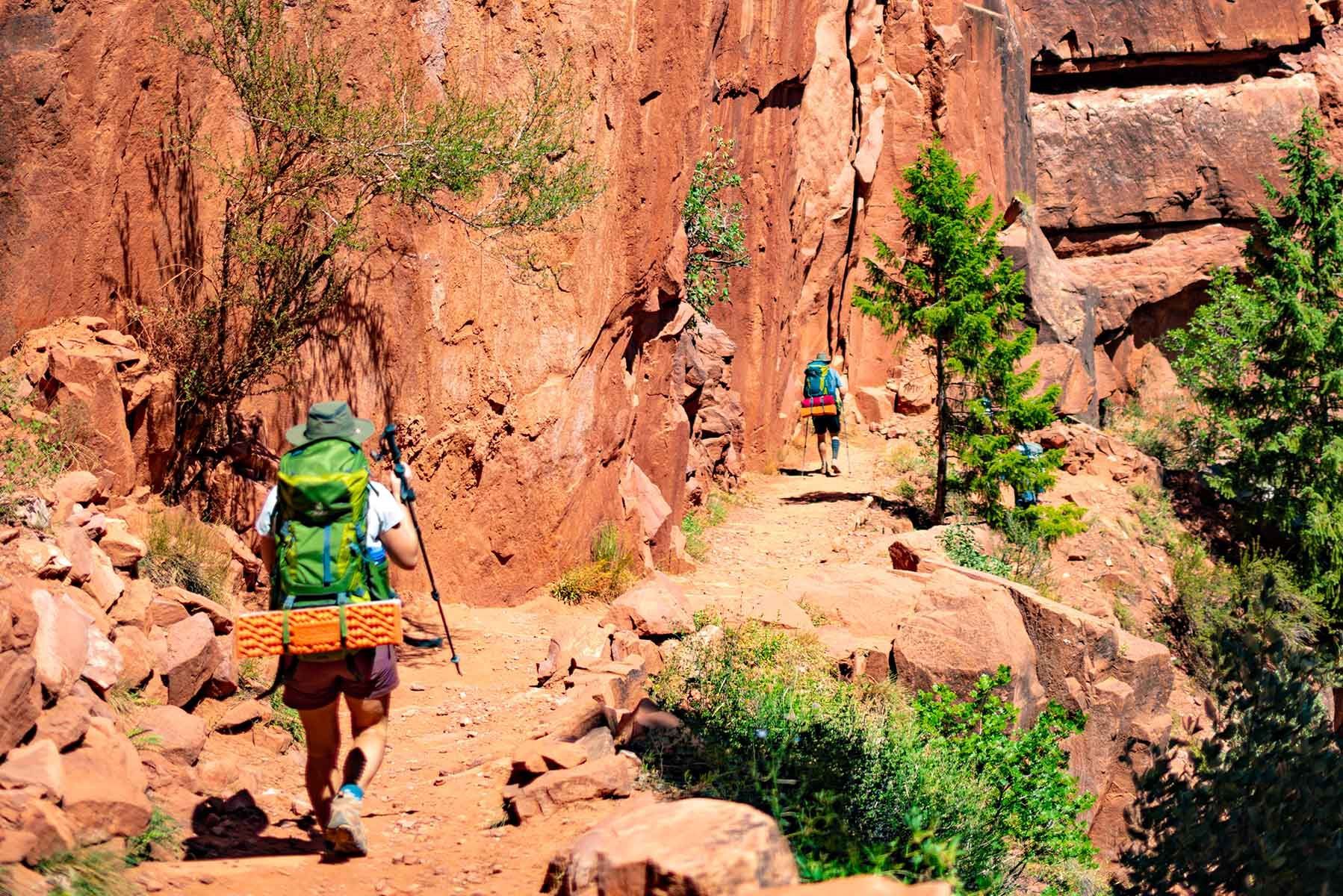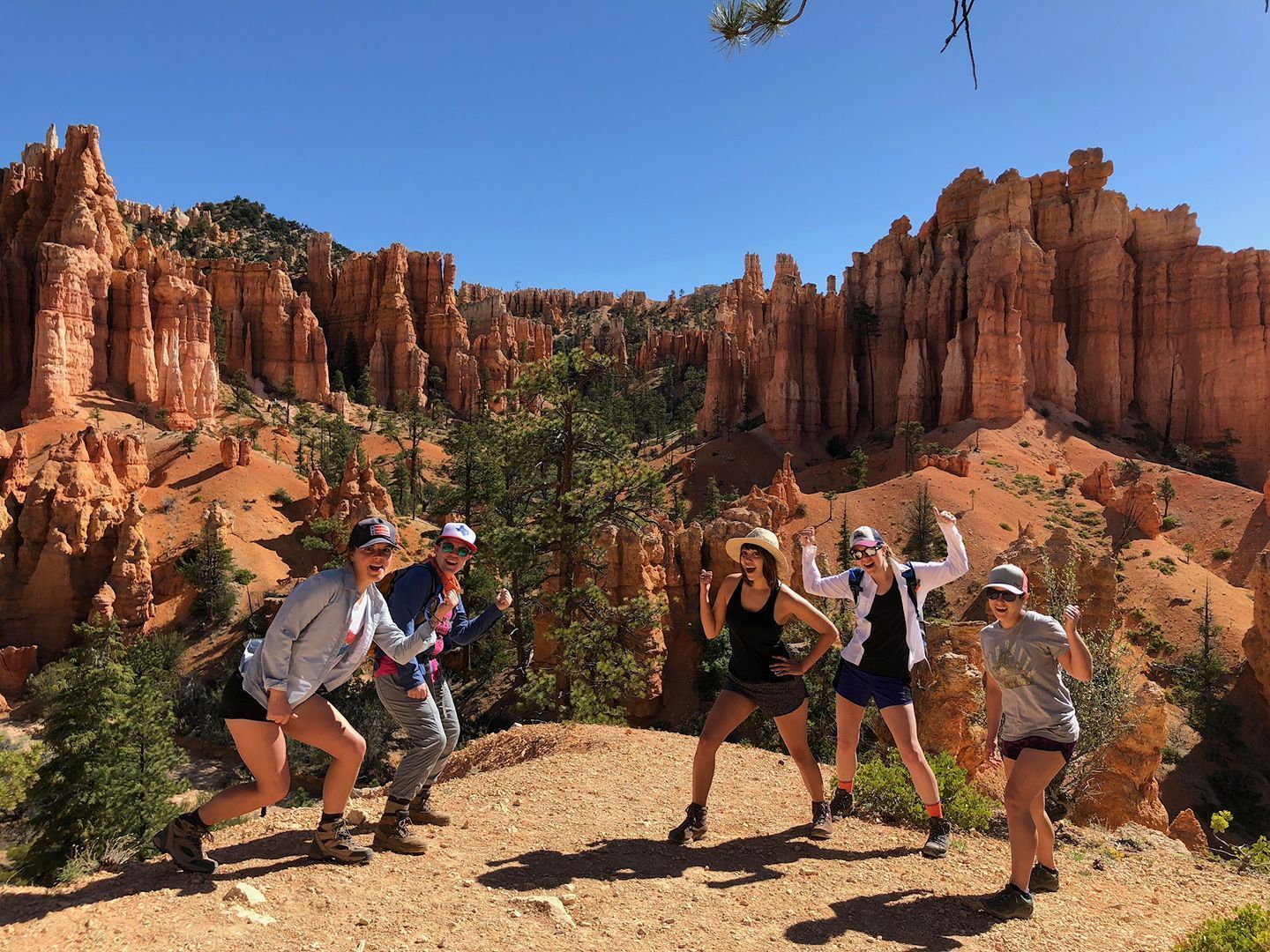Staying Fit and Preparing for Your Hike During COVID-19
Key Takeaways
- Train for hiking by hiking. Safely enjoy the outdoors by hiking with a loaded backpack to build endurance and replicate real trail conditions while maintaining social distancing.
- Incorporate indoor cardio exercises. Jump rope, burpees, and jumping jacks are great home-based workouts to boost cardiovascular health when trails aren’t accessible.
- Build lower-body and core strength. Bodyweight squats and lunges help strengthen key hiking muscles like the glutes, hamstrings, and core—essential for carrying a heavy pack.
- Don’t neglect flexibility. Practicing yoga or daily stretching routines improves balance, coordination, and recovery, making long hikes easier and safer.
- Stay consistent and creative. Mix outdoor hikes with indoor workouts to stay motivated, maintain fitness, and be ready for your next backpacking adventure post-pandemic.



Training and preparing for your future adventure can definitely be challenging during the time of Covid-19. It might require us to be more creative to continue our fitness regimen, but it is totally possible.
The best way to train for your future backpacking trips hasn’t changed from what we would have recommended prior to this pandemic. What better way to prepare for hiking than by hiking? One activity that is still available to most of us is to spend time hiking and enjoying the outdoors. As long as you are still able to safely practice social distancing, hiking is a wonderful way to stay fit and have a mental break from the daily reality of the current situation. We have always encouraged our guests to prepare for their trips by strapping on a backpack and hiking with the additional weight of the pack. This continues to be the best possible training and is one we can safely practice during this pandemic.
If you don’t have easy access to trails or would prefer to be training indoors right now, you could consider jumping rope, which is one of the best and most underrated cardio workouts available. Or you might look into adding jumping jacks or “burpees” into your training. These are all excellent exercises that improve your cardiovascular health and can be done in short bursts and from the safety of our homes or offices.
If you are looking for ways to supplement your hiking training with some weight exercises we encourage the use of bodyweight training and exercises. Body-weight squats are a great exercise that can be done anywhere and provide thorough lower body strengthening. These might sound simple but you should withhold judgment until you have tried incorporating bodyweight squats into your training. This exercise not only tones and strengthens your legs, but also your lower back and core – two areas that are
integral to backpacking. We suggest focusing on proper technique and form and working towards increasing repetitions over time. Once you’ve mastered the basic squat, look at expanding your training to include some of the many variations out there.
Body-weight lunges are another excellent exercise that trains the large muscle groups that are essential to hiking and backpacking. These focus on strengthening your gluteus maximus while also working your hamstrings, core muscles, lower back, calves, and hip stabilizers. They also feature the added benefit of improving our stability and balance, which certainly comes in handy when carrying a fully loaded backpack. Again, we stress a focus on form and proper motion to truly reap the benefits and minimize the risk of injury. Once you’ve perfected the form, you can look to increase repetitions and experiment with variations.
Strength training is one side of the training equation, but you should also be considering increasing your flexibility. There are all types of stretches that are specific to certain areas of the body but we recommend a whole-body approach. Basic yoga routines are a perfect solution. One of our personal favorites is ‘Yoga With Adriene’. This YouTube channel offers hundreds of videos that range from gentle stretching and breathing techniques to full-body workouts. Many of the routines are 15 to 20 minutes long and can be a great option to start your day. The increased flexibility and coordination gained from even occasional practice will definitely benefit you during your hiking adventures.
In short, there are many ways to keep fit and properly train for
your upcoming hiking adventure. Mix it up, keep it interesting, and stay focused on your goal. You’ll be out on the trail before you know it.
Frequently Asked Questions
Tips and guidance on how to stay fit and train effectively for hiking adventures, especially when outdoor access is limited during times like COVID-19.
How can I stay fit for hiking during COVID-19?
You can stay fit by combining outdoor hikes with indoor exercises. If local trails are open, hike regularly while carrying a backpack to simulate real conditions. When indoors, focus on cardio workouts like jumping rope or burpees and add strength and flexibility training through bodyweight exercises and yoga.
What are the best exercises to prepare for a hike?
The best exercises mimic hiking movements and build endurance. Prioritize bodyweight squats and lunges to strengthen your legs, lower back, and core. Complement these with cardio workouts such as jumping rope, burpees, and stair climbing, and add yoga or stretching to improve balance and flexibility.
Can I train for hiking indoors?
Yes, indoor training can be highly effective. Focus on exercises that build strength and stamina, such as bodyweight squats, lunges, burpees, and jumping jacks. Pair these with short yoga or stretching routines to improve flexibility and prevent stiffness from sitting or working at home.
How do bodyweight squats help with hiking preparation?
Bodyweight squats strengthen key hiking muscles, including your legs, glutes, lower back, and core. These areas support stability and endurance when carrying a backpack. Start with correct form and gradually increase repetitions to improve strength and reduce the risk of fatigue or injury on the trail.
Why are lunges important for hiking fitness?
Lunges target large muscle groups used in hiking—your glutes, hamstrings, calves, and core. They help improve balance and stability, which is crucial when navigating uneven terrain or carrying a loaded backpack. Consistent lunges enhance lower-body strength and control.
What kind of cardio helps most for hiking?
Cardio workouts that elevate your heart rate and build endurance are best. Jumping rope, burpees, and brisk stair climbing are effective, easy-to-do options. These activities boost cardiovascular health, preparing your body for long hikes and steep climbs without requiring special equipment.
How does yoga benefit hikers?
Yoga enhances flexibility, balance, and core strength—key components for hiking safely and efficiently. Regular yoga practice helps reduce muscle tension, improves posture, and increases joint mobility. Even 15–20 minutes of yoga a few times a week can significantly improve trail performance.
How can I train safely while social distancing?
Choose outdoor trails where distancing is possible, and hike solo or in small groups. Indoors, follow online fitness or yoga programs. Use bodyweight exercises instead of shared gym equipment, and alternate between indoor and outdoor workouts to stay consistent and safe.
How often should I train before a long hike?
Aim for a balanced routine three to five times per week. Combine hiking or cardio days with strength and flexibility sessions. Gradually increase intensity and duration over time, and always include rest days to allow your muscles to recover and adapt for better endurance.
What’s the best way to stay motivated to train at home?
Set a clear hiking goal, track your progress, and vary your workouts to avoid boredom. Try virtual fitness challenges, online yoga classes, or hiking-specific routines. Visualizing your next trail adventure can keep you motivated until you’re back outdoors.
Four Season Guides, 506 N Grant St suite o, Flagstaff, AZ 86004, United States
+19285251552
35.19653980, -111.62000560





